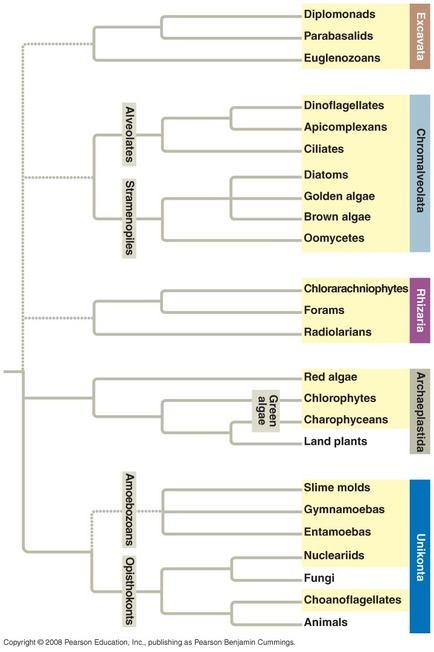Endosymbiosis is the main theory of how mitchondria and plastids were incorporated into eukaryotes. Evidence also supports the evolution of red and green algae from plastids. Other protist groups evolved after red or green algae were engulfed and then became endosymbionts.(2)
Simple eukaryotic cell evolution lead to the formation of the kingdom Protista. First, membrane infolding occurred in a select number of prokaryotes: this created the nuclear envelope and several of the organelles inherent to the endomembrane system. Then came endosymbiosis, which introduced the mitochondria and chloroplast: they began as parasitic prokaryotes within the eukaryotic host, but eventually developed into key energy production organelles. After these two main evolutionary events plants, animals, and fungi would evolve into more complex forms of the Protista. (8)

